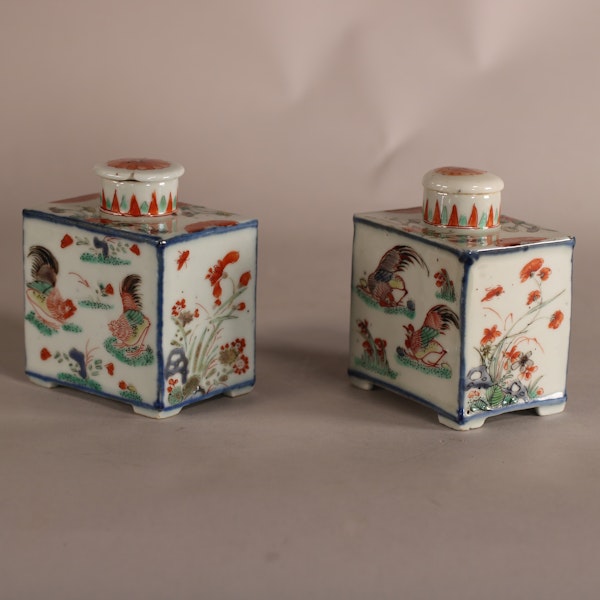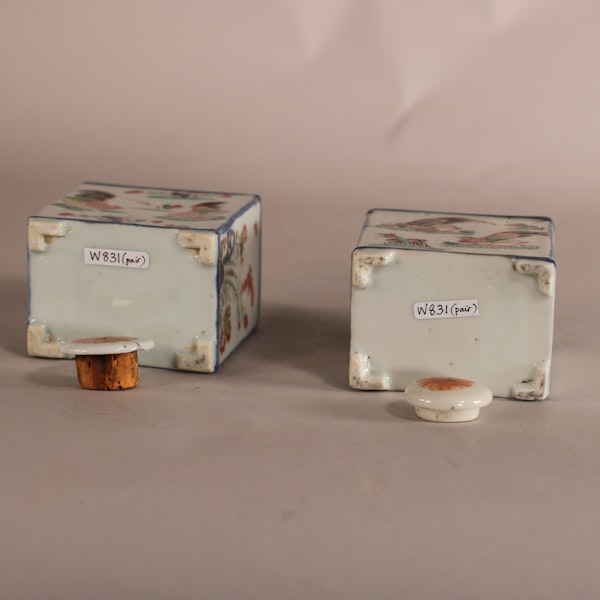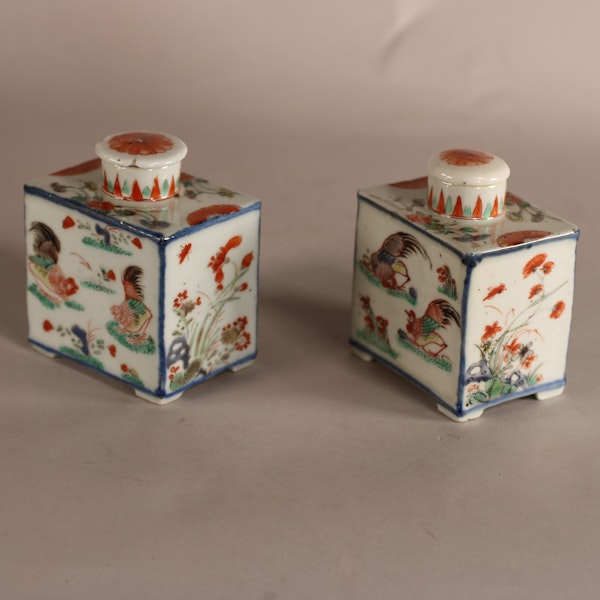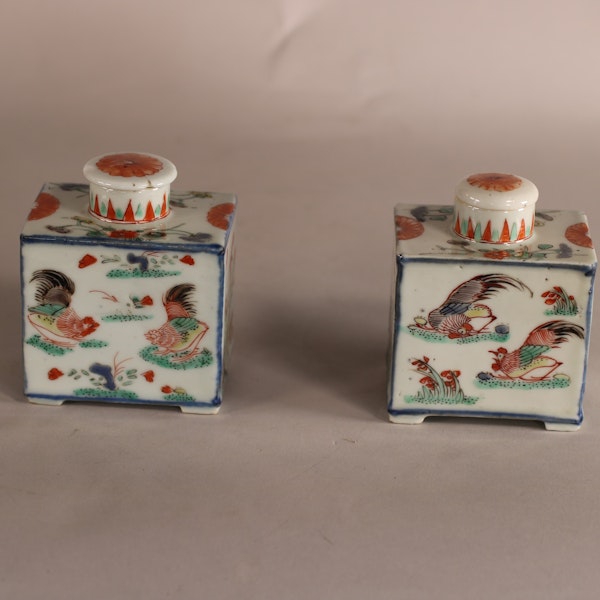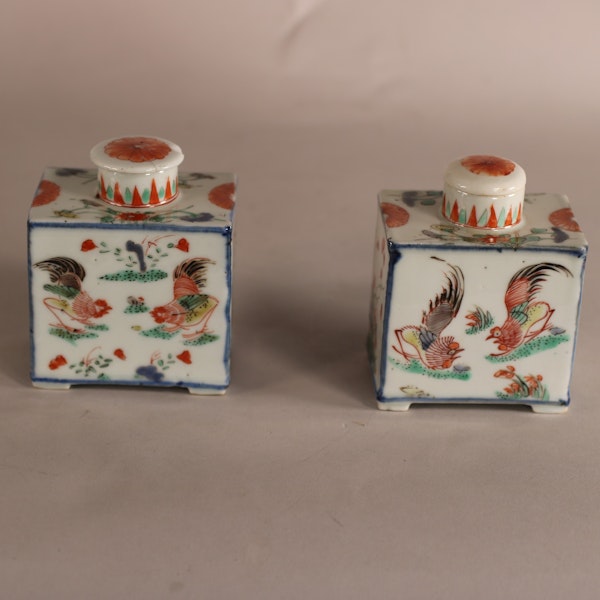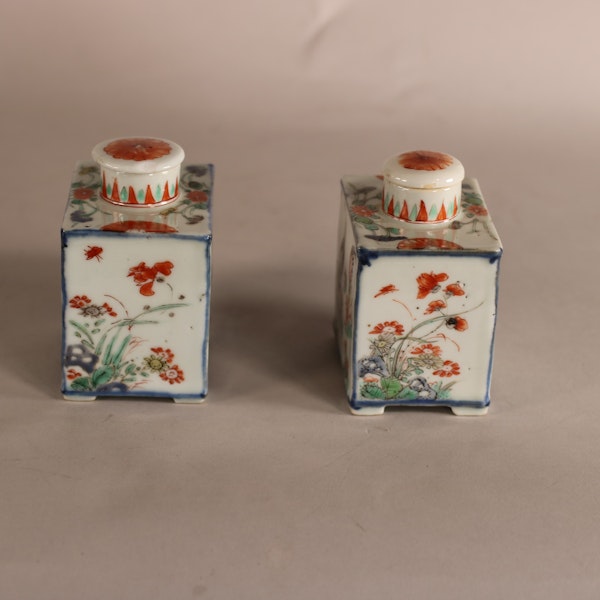Pair of Chinese famille verte caddies with covers, Kangxi (1662-1722)
Pair of Chinese famille verte caddies with covers, Kangxi (1662-1722)
POA
Description
Pair of Chinese famille verte caddies with covers, Kangxi (1662-1722), each supported on four low feet and decorated in underglaze cobalt blue and overglaze coloured enamels, the two large sides of each with a pair of strutting cockerel amongst flowers and rockwork, the narrow sides with grasses and flowers, predominantly in iron-red, issuing from rockwork with flying insects overhead; all within lines in underglaze blue to the edges, the shoulders with half chrysanthemum heads and further sprays of grasses and flowers, the lids each encircled by a band of stiff leaves in alternating red and green and surmounted by a further head of chrysanthemum.
Dimensions:
Height with cover: 9 cm. (3 1/2in.)
Condition: Good with one lid damaged (please refer to images)
The tenth animal of the zodiac, roosters have featured in Chinese art for millennia. The first reference to the zodiac in China date from the Western Han Dynasty (206 BCE- 9 CE), and tomb figurines of roosters, believed to keep evil spirits at bay as well as serving as an offering to sustain the deceased in the afterlife, have been found across China. Over time, the rooster became an important symbol associated with the New Year, and images of roosters were often pasted onto doors on the first day of the lunar New Year to protect the household – a tradition which continues today in many parts of China. The association of roosters with good fortune stems from the homonym – chicken (ji) or rooster (gonji) can serve as a visual pun representing luck (ji). Furthermore, more complex symbolic meaning can be construed through rooster imagery depending on the placement and representation of the rooster. For example, two roosters shown standing with one slightly higher, as they are here, refers to a wish for continued success; as the combination of the words ‘coxcomb’ (jiguan) and ‘standing’ (shang 上) evokes the phrase guangshang jiaguan (‘may you achieve rank upon rank’). Moreover, when a rooster is standing upon a rock (shi), the additional understanding of familial good luck (also pronounced ‘shi’) is evoked.
| item details | |
|---|---|
| Material and Technique | Porcelain with underglaze cobalt blue and overglaze enamel decoration in the famille verte palette |
| Origin | Chinese |
| Condition | Very good |
| Dimensions | Height with cover: 9 cm. (3 1/2in.) |
Product REF: W831
